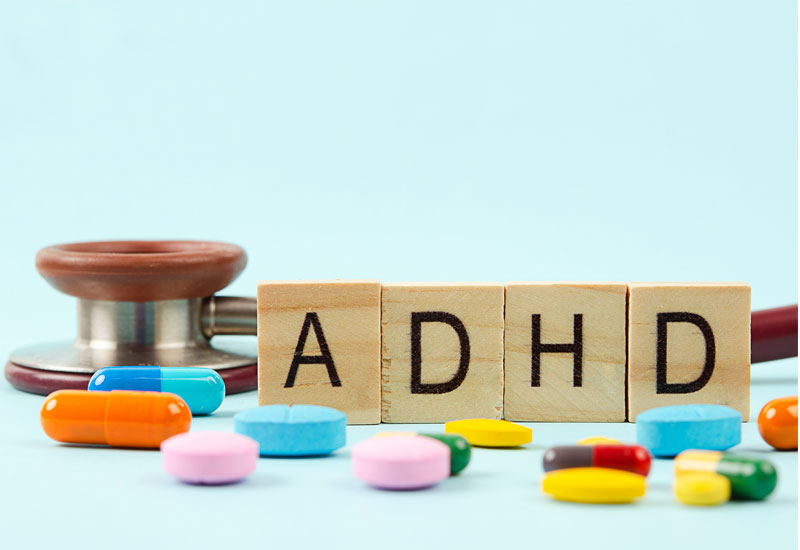Attention Deficit Hyperactivity Disorder (ADHD) affects adolescents in different ways, depending on their age, environment, and developmental stage. For preteens, ADHD may present as trouble following directions, difficulty staying on task, or impulsive decision-making. For older teens, it can impact their ability to manage responsibilities, regulate emotions, and prepare for adulthood. As a therapist working with families of adolescents, I know that finding the right treatment plan can feel overwhelming. ADHD medication is one of the most effective ways to manage symptoms, but choosing the right option requires understanding how each works and what to expect.
Understanding ADHD Medication for Children 10-19
If your adolescent has ADHD, you may be wondering what medication options are available and how they work. ADHD medications fall into two main categories: stimulants and non-stimulants. Each type affects the brain differently, and the right choice depends on your adolescent’s symptoms and specific needs.
Stimulant Medications
Stimulants are the most commonly prescribed medications for ADHD. They increase dopamine and norepinephrine levels in the brain, helping improve focus, impulse control, and hyperactivity.
Common Stimulant Medications for Adolescents
- Methylphenidate-based medications: Ritalin, Concerta, Metadate
- Amphetamine-based medications: Adderall, Vyvanse, Dexedrine
Benefits of Stimulants
- Fast-acting results, often noticeable within an hour
- Well-researched and proven to improve attention and self-regulation
- Available in different formulations for short- and long-term symptom control
Considerations
- Potential side effects include appetite suppression, sleep disturbances, and mood changes
- Some adolescents may need dosage adjustments for optimal results
- Not every adolescent responds well to stimulants, and alternative options exist
Non-Stimulant Medications
Non-stimulants provide an alternative for adolescents who do not tolerate stimulants well or require additional symptom management. These medications primarily target norepinephrine rather than dopamine.
Common Non-Stimulant Medications for Adolescents
- Atomoxetine (Strattera): A selective norepinephrine reuptake inhibitor (NRI) that helps with focus and impulse control
- Guanfacine (Intuniv) and Clonidine (Kapvay): Originally used for blood pressure management, these medications help regulate emotional responses and impulsivity
Benefits of Non-Stimulants
- No stimulant-related side effects such as jitteriness or appetite loss
- Can be beneficial for adolescents with coexisting conditions like anxiety
- Provides stable symptom control throughout the day
Considerations
- Takes longer to reach full effectiveness compared to stimulants
- Possible side effects include drowsiness, fatigue, or blood pressure changes
- May not be as immediately effective for severe hyperactivity
Choosing the Right ADHD Medication for Your Adolescent
Finding the right ADHD medication involves trial, patience, and communication with your adolescent’s doctor. Here are key factors to consider:
- Your Adolescent’s Primary Symptoms: Are they struggling more with focus, hyperactivity, or impulse control?
- Medical History: Some conditions can influence how your adolescent responds to medication.
- School and Social Needs: Consider how symptoms impact learning and relationships.
- Adjustment Period: Expect a period of monitoring and dosage fine-tuning to achieve the best results.
Read This Article: Understanding ADHD and the Role of Medication
The Role of Counseling for ADHD in Teens and Preteens
Medication is a powerful tool, but it is most effective when combined with counseling. Counseling for ADHD helps adolescents develop emotional regulation, executive functioning skills, and coping mechanisms to thrive at home and in school. Behavioral therapy, social skills training, and parental guidance all contribute to a well-rounded approach.
Bonus Resource: Integrating Medication with Therapy and Doing it Mindfully
Managing Common ADHD Medication Side Effects
Everyone reacts differently to medication, and side effects are sometimes part of the adjustment process. Open communication with your doctor can help fine-tune the treatment plan.
Common Side Effects and How to Handle Them
- Loss of Appetite: Provide nutrient-dense meals and snacks at optimal times.
- Sleep Disruptions: Establish a strong bedtime routine and consider adjusting medication timing.
- Mood Changes: Track behavioral shifts and consult with the doctor for dosage adjustments.
- Increased Anxiety or Tics: Some medications may trigger anxiety or physical tics, requiring a change in prescription.
Medication Management Services are available in Albuquerque to help and guide you through treatment plans and get the most out of them.
How to Support Your Child Through ADHD Treatment
Helping your teen or preteen thrive with ADHD goes beyond medication. Parents, caregivers, and guardians can take additional steps to improve outcomes:
- Create Structure at Home: A predictable routine can reduce stress and improve task management.
- Encourage Regular Exercise: Physical activity has been shown to improve focus and emotional regulation in adolescents with ADHD.
- Work with Educators: Speak with your adolescent’s teachers about classroom accommodations that may help, such as additional time on tests or movement breaks.
- Emphasize Emotional Support: ADHD can impact self-esteem, so celebrate small wins and encourage positive reinforcement.
Read More: The Truth About Medication Management And Why You Need It
More Resources
For additional insights and research on ADHD treatments, consider reading:
- ADHD Medication Chart: Types and Dosages
- ADHD Medication Overview | Cleveland Clinic
- Understanding ADHD Medications | Child Mind Institute
FAQs About ADHD Medications
- How do I know if my adolescent needs ADHD medication?
If ADHD symptoms are affecting daily life, school performance, or social interactions, a professional evaluation can help determine if medication is a good option. - What are non-medication alternatives for ADHD in adolescents?
Behavioral therapy, structured routines, dietary adjustments, and mindfulness practices can support adolescents with ADHD without medication. - How long does it take for ADHD medication to start working?
Stimulants typically work within an hour, while non-stimulants may take several weeks to show full effectiveness. - Can my child stop taking ADHD medication if symptoms improve?
Medication plans should always be adjusted under a doctor’s supervision. Some adolescents may eventually reduce or stop medication, while others benefit from long-term use.
Final Thoughts
Deciding on ADHD medication for your teen or preteen is a deeply personal decision that should be made with knowledge and guidance. Both stimulant and non-stimulant medications offer valuable treatment options, but they are most effective when paired with behavioral support and structured routines.
By working closely with a healthcare provider and teaming up with a medicine management professional you can effectively combine the right medication into your child’s life with minimal risks and side effects..
Medication Management Services are available in Albuquerque to help and guide you through treatment plans and get the most out of them.




